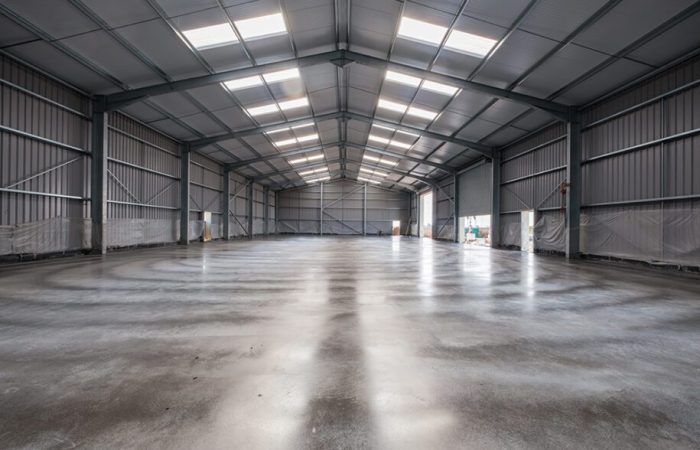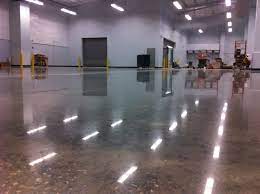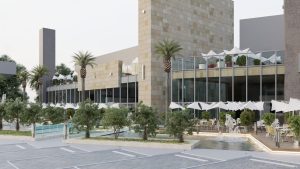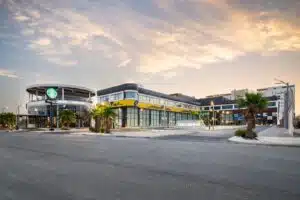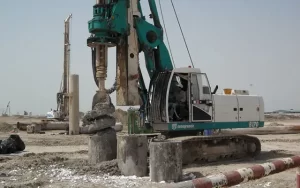Traditional RC vs. SFRC Floors for Logistics
Concrete flooring is the backbone of logistics facilities. Whether in warehouses, distribution centers, fulfillment hubs, or cold storage plants, the floor must withstand extreme demands: heavy forklift traffic, concentrated racking loads, high abrasion, and continuous operations.
Traditionally, Reinforced Concrete (RC) slabs with rebar or mesh have been the standard choice. But with the rise of high-throughput logistics hubs in Saudi Arabia, SFRC (Steel Fiber Reinforced Concrete) floors are rapidly gaining ground. By distributing steel fibers throughout the slab, SFRC offers enhanced strength, crack resistance, and the ability to construct jointless slabs—a major advantage for forklift-heavy environments.
This article provides a comprehensive comparison between Traditional RC and SFRC floors for logistics, analyzing design, cost, durability, advantages, disadvantages, and real-world applications in Saudi Arabia.
Section 1: Understanding the Basics
What is Traditional Reinforced Concrete (RC)?
-
Uses rebar or welded wire mesh to reinforce concrete.
-
Reinforcement resists tensile stresses and controls cracking.
-
Standard slab thickness: 150–300 mm, depending on load requirements.
-
Requires saw-cut contraction joints to manage shrinkage.
What is Steel Fiber Reinforced Concrete (SFRC)?
-
Integrates short steel fibers (30–60 mm) into the mix.
-
Fibers are randomly distributed, providing reinforcement in all directions.
-
Enables jointless slabs up to 50×50 m.
-
Reduces reliance on rebar or mesh.
Section 2: Key Design Parameters Compared
| Parameter | Traditional RC | SFRC |
|---|---|---|
| Reinforcement | Mesh or rebar placed in grid | Steel fibers mixed throughout concrete |
| Crack Control | Relies on rebar at specific depths | Fibers prevent micro-crack growth |
| Jointing | Requires frequent saw-cut joints | Large jointless slabs possible |
| Load Resistance | Good under static loads | Superior under dynamic forklift loads |
| Thickness | 150–300 mm | 180–250 mm (optimized with fibers) |
| Durability | Joints deteriorate over time | Jointless = longer life, lower maintenance |
| Installation Speed | Slower, requires bar fixing | Faster, eliminates rebar installation |
Section 3: Performance in Logistics Applications
Load Bearing
-
RC: Effective for uniform static loads, but joints are weak under forklift impact.
-
SFRC: Distributes loads more evenly; fibers resist fatigue from constant traffic.
Flatness & Automation
-
RC: More joints = risk of uneven surfaces.
-
SFRC: Laser screed + jointless design = TR-34/FM2 compliance for Very Narrow Aisle (VNA) forklifts.
Maintenance
-
RC: Frequent joint repair needed.
-
SFRC: Less maintenance, lower lifecycle costs.
Durability
-
RC: Joints deteriorate within 3–5 years.
-
SFRC: Floors last 20–30 years with minimal repair.
Section 4: Cost Comparison
Initial Costs
-
RC: Lower upfront cost per cubic meter.
-
SFRC: Higher due to fiber dosage (25–40 kg/m³).
Lifecycle Costs
-
RC: High maintenance (joint repair, epoxy patching).
-
SFRC: Lower lifecycle cost due to durability and fewer joints.
👉 Over a 20-year period, SFRC often proves more economical for logistics hubs.
Section 5: Case Studies from Saudi Arabia
Al Saif Cold Storage Warehouses – Dammam
-
SFRC jointless slabs designed to withstand freezing conditions.
-
Laser screed precision for forklift operations.
Kameyat Specialties Factory – Dammam
-
Heavy-duty SFRC flooring for production + logistics.
-
Resistant to machinery vibration and forklift wear.
AMC Factory – Dammam
-
136,000 m² of flooring completed using SFRC.
-
Supported heavy racks and 24/7 logistics operations.
Section 6: Climate Considerations in Saudi Arabia
Traditional RC Challenges
-
High temperatures accelerate shrinkage, leading to cracking.
-
Frequent joint repairs needed.
SFRC Solutions
-
Fibers limit crack propagation.
-
Jointless slabs reduce vulnerability in hot and dry climates.
-
Compatible with sulphate-resistant cement (SRC) in coastal zones like Dammam and Al Khobar.
Section 7: Advantages & Disadvantages
Advantages of RC
-
Familiar method for contractors.
-
Lower initial cost.
-
Adequate for light logistics applications.
Disadvantages of RC
-
Weak at joints.
-
Higher long-term maintenance.
-
Not suitable for high-speed automated logistics.
Advantages of SFRC
-
Jointless slabs for forklift efficiency.
-
Longer lifespan with lower maintenance.
-
Better crack resistance.
-
Higher fatigue performance.
Disadvantages of SFRC
-
Higher upfront material cost.
-
Requires skilled contractors for design and execution.
Section 8: Choosing the Right Contractor
Not all contractors have the expertise for SFRC floors. It requires:
-
Experience with fiber dosing and mixing.
-
Laser screed technology for flatness.
-
Compliance with TR-34/FM2 standards.
Leading Contractors in Saudi Arabia
-
DTC General Contracting – Specialists in SFRC logistic flooring.
-
Saudi Readymix – Provides SFRC mixes.
-
Zamil Steel Construction – Integrated structural + flooring contractor.
Section 9: Future of Logistic Flooring in Saudi Arabia
With the expansion of Saudi Vision 2030 logistics zones, SFRC is set to dominate flooring solutions.
-
Reduced downtime from joint repairs.
-
Better suited for automation and AI-driven warehouses.
-
Supports mega-distribution hubs in Riyadh, Jeddah, Dammam, and Al Khobar.
Conclusion
The debate of Traditional RC vs. SFRC floors for logistics is ultimately about performance vs. cost. While RC floors remain common for smaller warehouses, SFRC offers the durability, efficiency, and long-term savings demanded by modern logistics.
For Saudi Arabia’s growing logistics sector, SFRC is the future of industrial flooring.
Traditional RC vs. SFRC Floors for Logistics
Call to Action
Looking for expert contractors for SFRC and logistic flooring in Saudi Arabia? Partner with DTC General Contracting for reliable, jointless, and forklift-ready floors.
📞 +966 566 41 1325
📧 info@dtc.sa
🌐 Visit Our Website
📺 YouTube | 💼 LinkedIn

